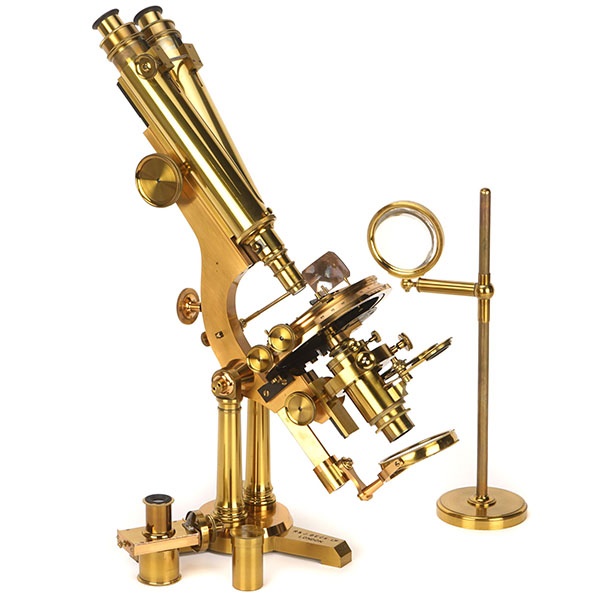Smith, Beck & Beck Microscopes
11/09/2023
Smith & Beck: A Brief History of the Company
In the early 19th century, James Smith, a little-known mathematical instrument maker and optician, was approached by J.J. Lister, the father of Joseph Lister, to design a new kind of microscope objective lens system. Lister provided his own drawings, and in 1826, Smith brought his designs to life. This collaboration laid the foundation for the company of Smith & Beck.
As the demand for microscopes grew throughout the 1830s, Smith realized the business potential and, with the assistance of Lister, established his own company. Their first premises were established at 50 Ironmonger Row, Old Street, London, in 1839. The Microscopical Society, upon its formation, placed an order with three leading microscope makers, among them Smith. Smith's instrument was delivered in December 1841.

A Large Smith & Beck No.1 Circuit Stage Binocular Microscope, English, dated 18 April 1899*, signed to the foot ‘R & J Beck Ltd LONDON’ and ‘N°21383’ Sold for £8820.00
Smith aimed to meet the needs of the time by producing microscopes that were not overly extravagant like those made by Powell & Lealands, but rather workmanlike and reasonably priced. This approach set the stage for the company's success, which extended well into the 20th century.
Richard Beck, a nephew of J.J. Lister, joined Smith as an apprentice and eventually became a partner in 1847. At that point, the firm's name changed to 'Smith & Beck,' and they relocated to 6 Coleman Street in the City of London.
In 1851, Joseph Beck, who had previously apprenticed with Troughton & Simms, the prominent scientific instrument makers of the time, joined his brother Richard in the firm. By 1857, Joseph also became a partner, leading to another name change—'Smith, Beck & Beck.'
To meet the growing demands for their products, which encompassed various optical instruments and microscope accessories, the company established a factory called the Lister Works in Holloway in 1853.
Following James Smith's retirement in 1865 (he passed away in 1870), the company underwent another name change, this time becoming 'R & J. Beck.' The head office moved to 31 Cornhill in 1865 and later to 68 Cornhill in June 1880. From 1870 to 1885, exclusive representation in the United States was given to James W Queen & Co., located on Chestnut Street in Philadelphia.
Smith & Beck's reputation grew, culminating in their participation in the Great Exhibition of 1851, where they were awarded a Council Medal, albeit ranking second to Ross. James Smith was elected a member of the Microscopical Society on February 19, 1840, narrowly missing being a founding member. Richard Beck was elected in 1855, and his brother Joseph in 1859. James Smith's son, also named James, became a Fellow of the Society on November 14, 1866, when both he and his father were residing at 56 Tollington Road, London.
Smith & Beck produced thousands of microscopes over the years, supplying universities, government departments, hospitals, and laboratories worldwide. Many of these instruments are still in existence today and have become highly sought-after collectibles.
Beck Microscopes valuations and worth
When it comes to evaluating the value of Smith & Beck microscopes it very much depends on its condition and completeness. A large Victorian binocular microscope complete outfit can be valued at £3000 to £5000, again subject to condition and completeness. Moreover, particularly rare and unusual microscopes like the Beck international binocular can command higher values, ranging from £5000 to £10,000.
---